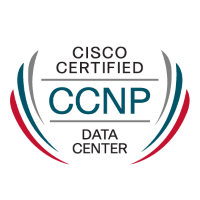Course Objective
After completing this course you should be able to:
- Describe how to troubleshoot the data center network
- Describe the troubleshooting tools and methodologies that are available from the CLI and are used to identify and resolve issues in a Cisco Data Center network architecture
- Identify and resolve issues that are related to: VLANs and PVLANs; port channels and virtual port channels; OTV; and VXLAN
- Describe troubleshooting of routing protocols such as OSPF, EIGRP, and PIM.
- Describe troubleshooting of the LAN security features
- Identify and resolve issues that are related to a single device
- Identify and resolve issues that are related to Fibre Channel interface operation
- Identify and resolve Fibre Channel switching issues when the Cisco NX-OS Software is used in switched mode, and in NPV mode
- Identify and resolve issues that are related to FIP and FCoE, including FCoE performance
- Describe Cisco UCS architecture, initial setup, tools, and service aids that are available for Cisco UCS troubleshooting and interpretation of the output
- Describe Cisco UCS configuration and troubleshoot related issues
- Describe Cisco UCS B-Series Blade Server operation and troubleshoot related issues
- Describe LAN, SAN, and Fibre Channel operations, including in-depth troubleshooting procedures
- Describe Cisco IMC tools for validating performance and facilitating data-gathering activities for Cisco UCS C-Series server troubleshooting, and the troubleshooting approach for hardware and firmware failures
- Define the proper procedures for configuring LAN and SAN connectivity, avoiding issues with the VIC, and troubleshooting connectivity issues
- Troubleshoot Cisco UCS C-Series server integration with Cisco UCS Manager
- Identify the tools, protocols, and methods to effectively troubleshoot Cisco ACI
- Describe how to troubleshoot automation, scripting tools, and programmabilit
Course Content
Introducing Cisco ACI Fabric Infrastructure and Basic Concepts
- What Is Cisco ACI?
- Cisco ACI Topology and Hardware
- Cisco ACI Object Model
- Faults, Event Record, and Audit Log
- Cisco ACI Fabric Discovery
- Cisco ACI Access Policies
Describing Cisco ACI Policy Model Logical Constructs
- Cisco ACI Logical Constructs
- Tenant
- Virtual Routing and Forwarding
- Bridge Domain
- Endpoint Group
- Application Profile
- Tenant Components Review
- Adding Bare-Metal Servers to Endpoint Groups
- Contracts
Describing Cisco ACI Basic Packet Forwarding
- Endpoint Learning
- Basic Bridge Domain Configuration
Introducing External Network Connectivity
- Cisco ACI External Connectivity Options
- External Layer 2 Network Connectivity
- External Layer 3 Network Connectivity
Introducing VMM Integration
- VMware vCenter VDS Integration
- Resolution Immediacy in VMM
- Alternative VMM Integrations
Describing Layer 4 to Layer 7 Integrations
- Service Appliance Insertion Without ACI L4-L7 Service Graph
- Service Appliance Insertion via ACI L4-L7 Service Graph
- Service Graph Configuration Workflow
- Service Graph PBR Introduction
Explaining Cisco ACI Management
- Out-of-Band Management
- In-Band Management
- Syslog
- Simple Network Management Protocol
- Configuration Backup
- Authentication, Authorization, and Accounting
- Role-Based Access Control
- Cisco ACI Upgrade
- Collect Tech Support
Labs
- Validate Fabric Discovery
- Configure Network Time Protocol (NTP)
- Create Access Policies and Virtual Port Channel (vPC)
- Enable Layer 2 Connectivity in the Same Endpoint Group (EPG)
- Enable Inter-EPG Layer 2 Connectivity
- Enable Inter-EPG Layer 3 Connectivity
- Compare Traffic Forwarding Methods in a Bridge Domain
- Configure External Layer 2 (L2Out) Connection
- Configure External Layer 3 (L3Out) Connection
- Integrate Application Policy Infrastructure Controller (APIC) With VMware vCenter Using VMware Distributed Virtual Switch (DVS)
Test certification
Recommended as preparation for the following exams:
300-620 DCACI – Implementing Cisco Application Centric Infrastructure

